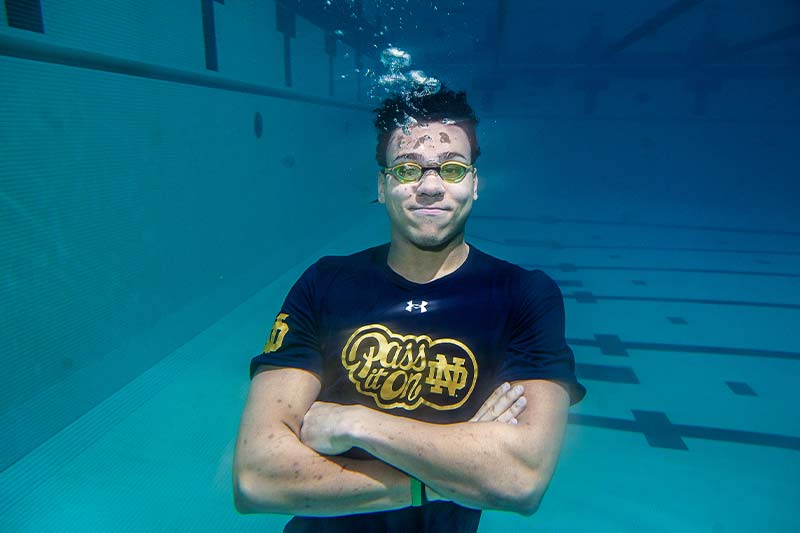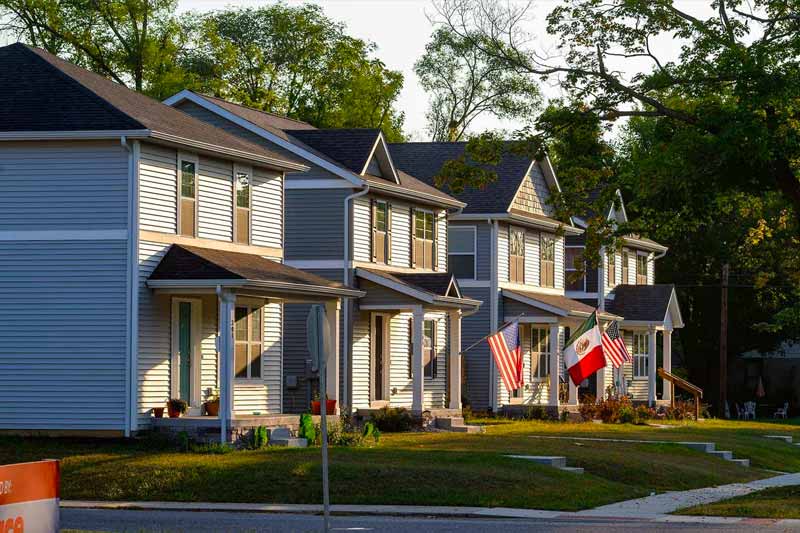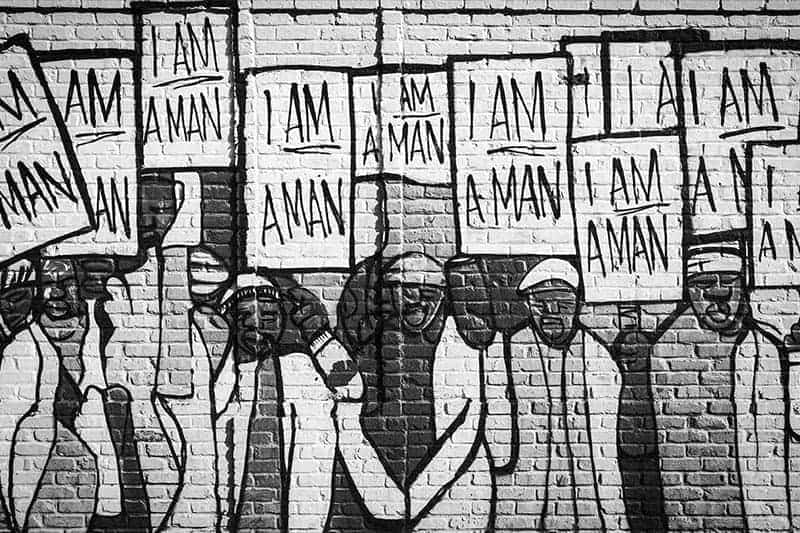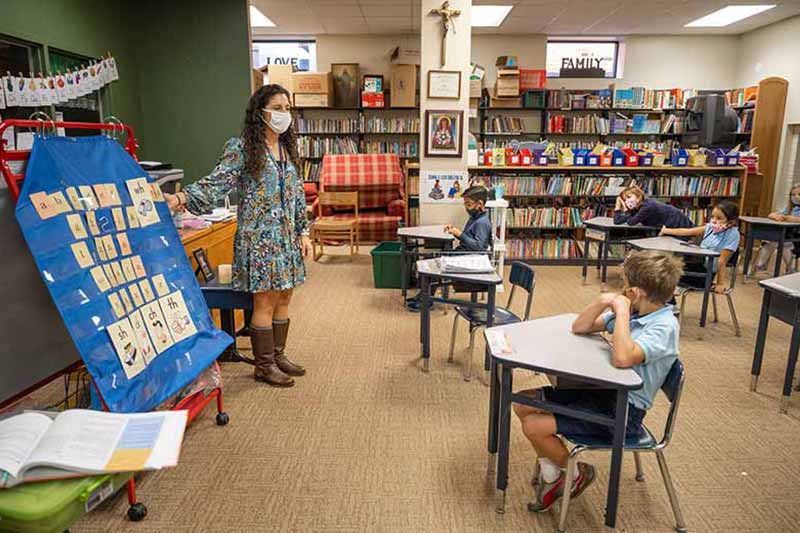As the son of a former college swimmer, Cason Wilburn was introduced to the water at a young age, before he could walk or even sit up.
“My mom taught me how to swim at like 6 weeks,” said Wilburn, a junior at the University of Notre Dame and a member of the men’s swimming and diving team. “She threw me in the water and made sure I was comfortable.”
“I was the only Black swimmer on my high school team. I was the only Black swimmer on the national team in high school.” —Cason Wilburn, junior
Growing up in coastal Virginia, Wilburn, whose mom, Cassondre Wilburn, swam in college and later coached her son, started swimming competitively at the age of 4. He showed immediate promise, setting records for his age group and winning state titles. By the time he was a senior in high school, he owned a state record in the 100-meter freestyle and was competing for a spot on the U.S. Olympic team.
But while he enjoyed the water, he could not help but notice something conspicuous about his fellow swimmers: They were all white.
“I was the only Black swimmer on my high school team,” Wilburn said. “I was the only Black swimmer on the national team in high school.”
Not one to ignore a problem, Wilburn organized swimming lessons for mostly Black youth in southeast Virginia as a way to attack the problem at the source by providing a safe and welcoming environment for kids of all backgrounds to learn about swimming and water safety from youthful mentors/instructors.
Now, after a couple of false starts because of the pandemic, he is offering the same opportunity to South Bend-area youth.
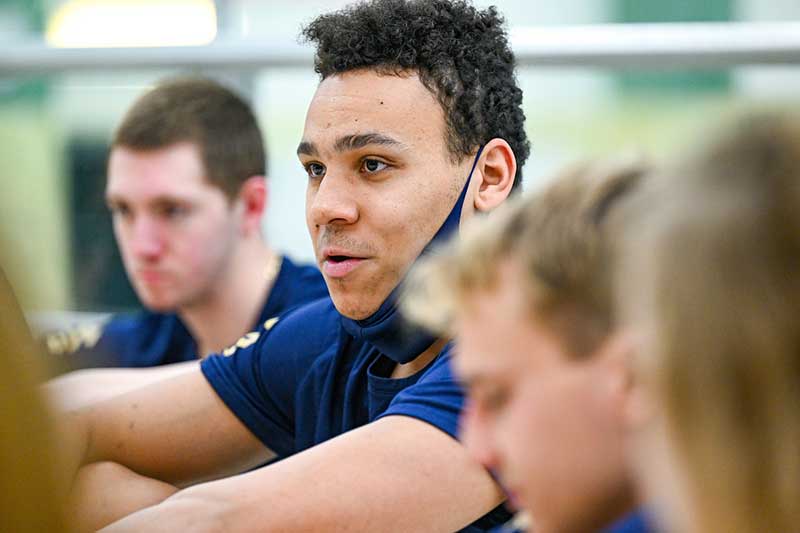
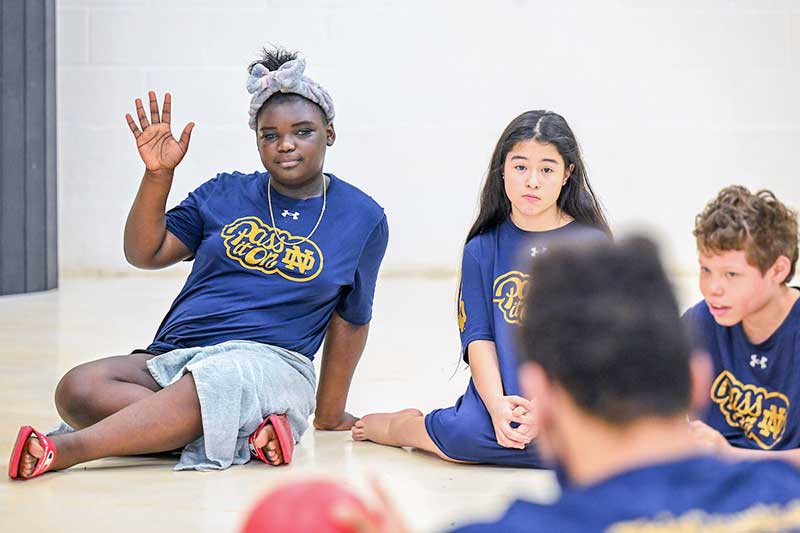
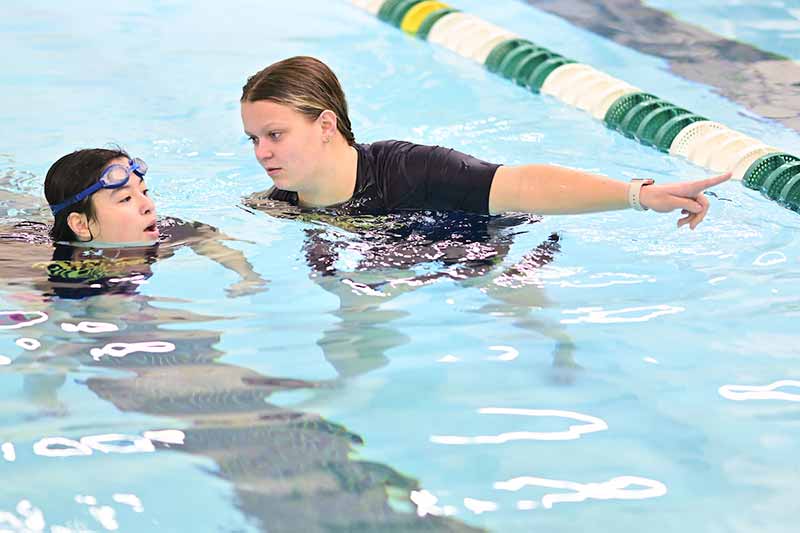
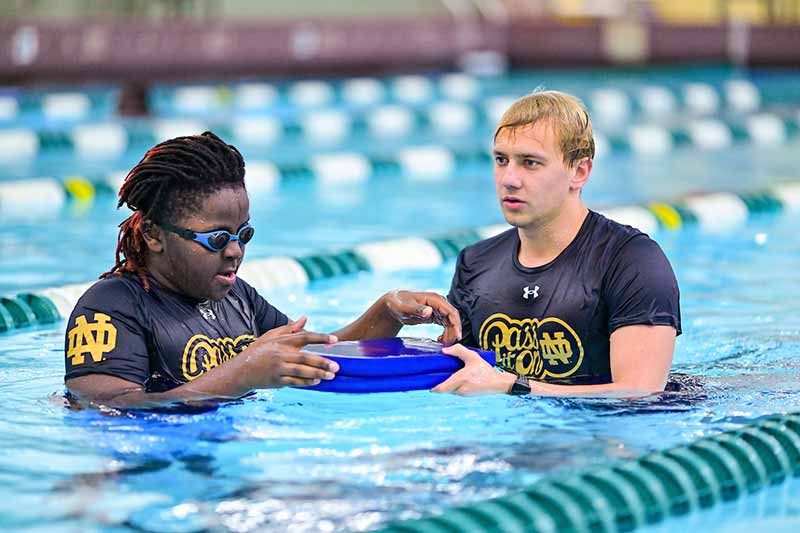
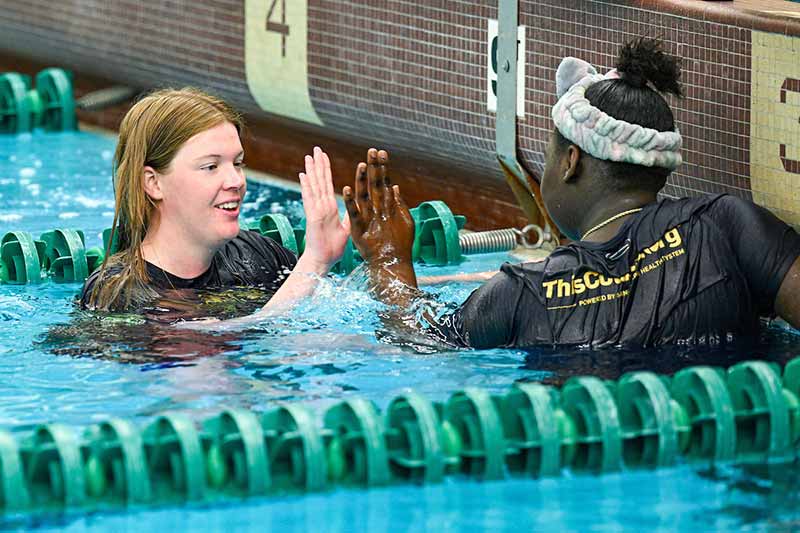
Led by Wilburn, members of the men’s and women’s swimming and diving teams provided free swimming lessons last month to a diverse group of middle schoolers in South Bend as part of Pass It On, a sports-based leadership program led by student-athletes with support from the GLD (Grow. Lead. Do.) Center, a division of Notre Dame Athletics.
The kids, from Dickinson Fine Arts Academy and Navarre Middle School, learned about swimming and water safety, as well as leadership, from about two dozen student-athletes at the Washington High School pool in South Bend.
The kids splashed around in comfort despite the freezing temperatures outside. Some hung close to the tiled edge or clung to the plastic lane dividers for safety. Others swam slow but determined laps.
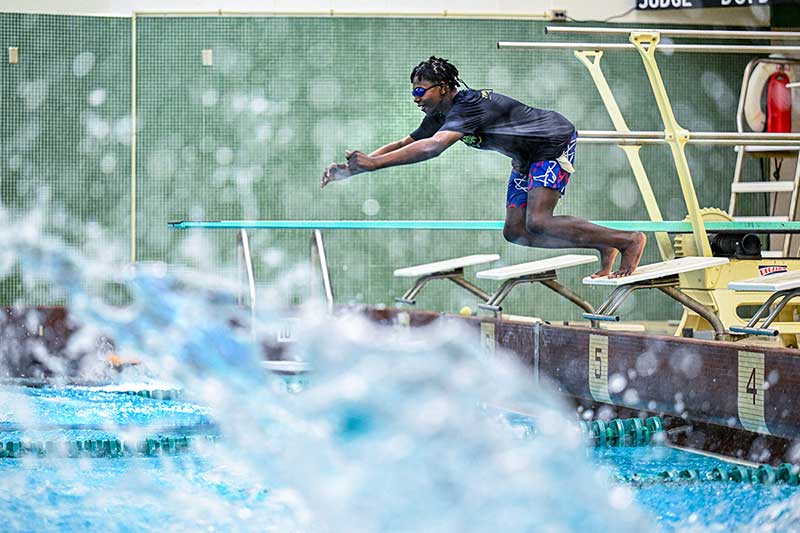
It was the first of four lessons planned for consecutive Saturdays in February and March.
“A top strategic priority for our district is to provide transformative experiences for our children through participating in sports that are deemed nontraditional in our communities.” —Milt Lee, The South Bend Community School Corporation
“I feel like everyone should know how to swim,” said Wilburn, a junior environmental engineering major. “Especially members of communities of color who don’t have as much access to pools. It’s an important life skill.”
And a priority for the South Bend Community School Corp., according to Milt Lee.
“A top strategic priority for our district is to provide transformative experiences for our children through participating in sports that are deemed nontraditional in our communities,” said Lee, director of K-12 athletics and community partnerships for the corporation. “Swimming ranks near the top of the list. And I can’t think of a better partner than the University of Notre Dame’s swimming and diving team and athletes to assist us in achieving our goal.”
Wilburn conceived of the program during his time with the Rosenthal Leadership Academy, for which he was nominated by his coaches. Offered through the GLD Center, the academy develops and enhances strong leadership among Notre Dame student-athletes with a focus on four growth areas: skill building, self-awareness, commitment to institutional and team goals, and empathy and perspective-taking.
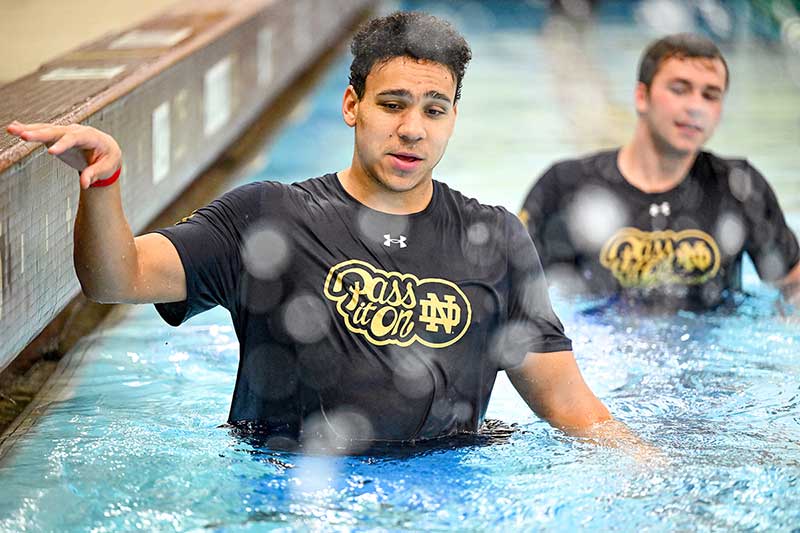
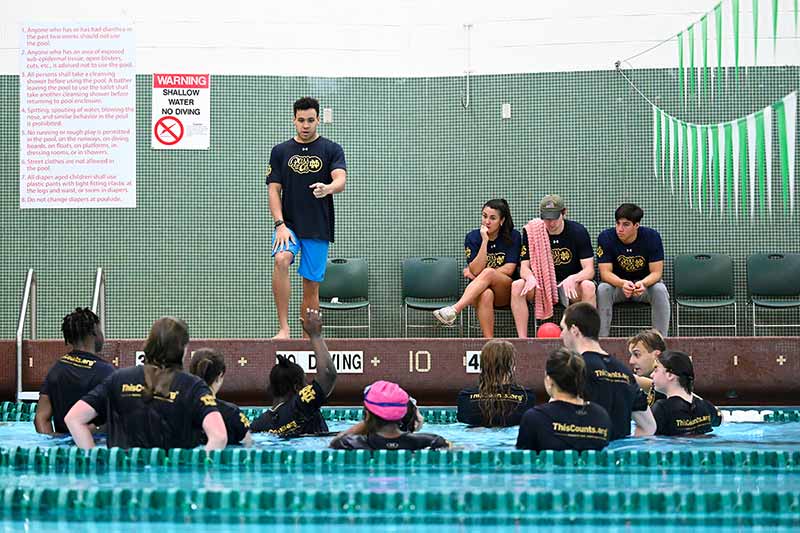
“Cason demonstrates leadership skills consistently on and off the pool deck,” said Becca Weiland, an assistant swimming and diving coach. “As a swim team member, he is one of those guys that's always willing to lend a helping hand to anyone asking. So when he told me that he was initiating the learn-to-swim program through the GLD Center, it came as no surprise to me that he would launch a program like this. When I watch him conduct the lessons, I see that he genuinely cares for each individual participating and makes each session a fun learning experience.”
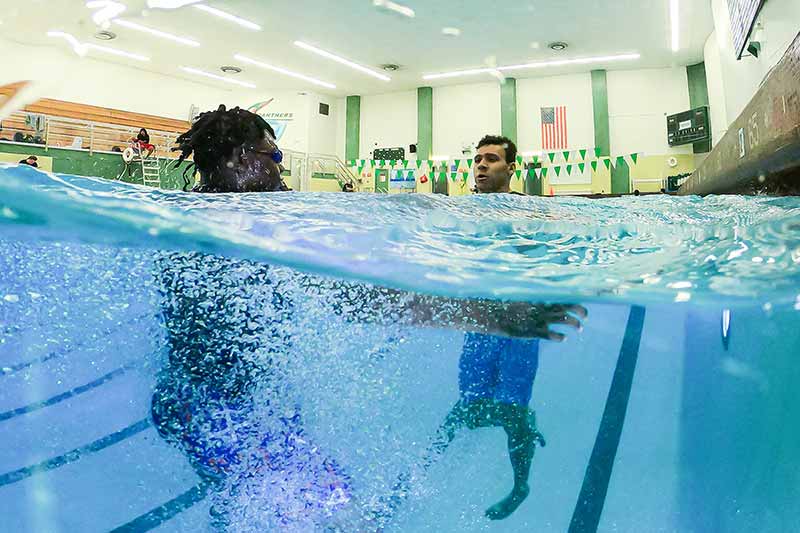
She continued, “He is the type of individual that embodies the Spirit of Notre Dame — kind, caring, compassionate, respectful and, above all else, one of the hardest working individuals I've known. I hope this program continues for years to come.”
Despite his success in the pool, where he competes in the 100 and 200 freestyle and the 100 butterfly, Wilburn is an outlier in the somewhat insular world of swimming: a person of color in an otherwise overwhelmingly white sport.
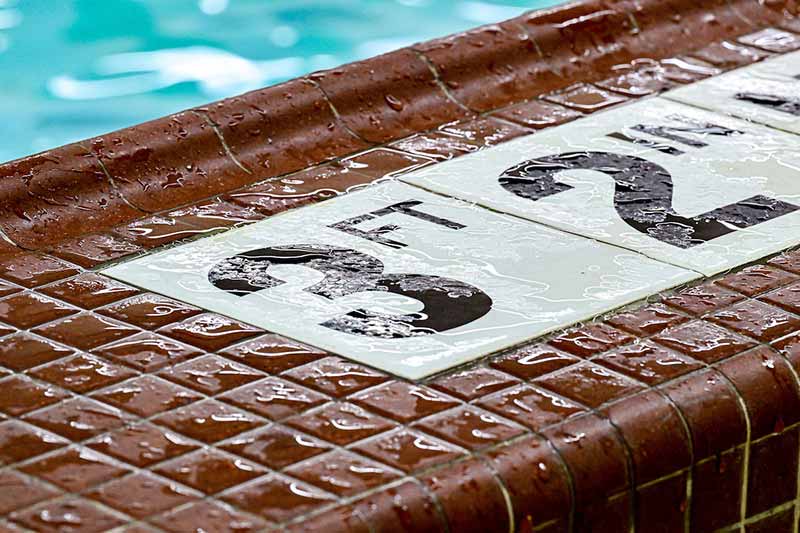
According to USA Swimming, 70 percent of Black people and 60 percent of Hispanic people do not know how to swim, compared with 30 percent of white people. Among children, 64 percent of Blacks and 45 percent of Latinos have no or low swimming ability, putting them at risk for drowning.
On the competitive side, fewer than 5 percent of USA Swimming’s more than 400,000 members identify as Black or Latino, while just 9 percent identify as Asian. Fewer than 1 percent identify as Native American or Alaskan native.
Black people make up just 1 percent of NCAA swimmers in the U.S.
“At Notre Dame, I’m the only Black swimmer,” Wilburn said.
Swimming Gaps
Percentage of people who know how to swim, by race
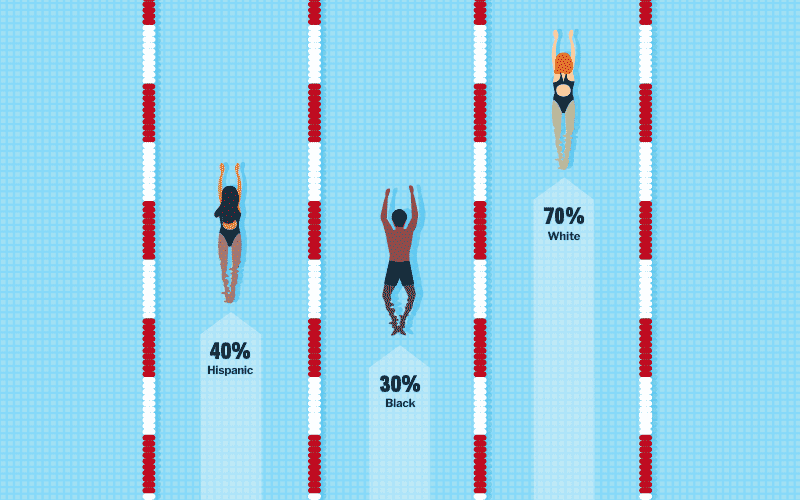
‘Something that’s unique to America’
This is not by accident.
Historically speaking, public pools were restricted or completely off limits to Black people because of racist public policy. In places where Black people were allowed to swim with white people, they were not always welcome. In St. Louis, white swimmers attacked Black swimmers with bats. In Florida, a white hotel manager poured muriatic acid into a segregated pool near protesting Black and white swimmers.
Hispanic and other non-white swimmers, and even ethnic minorities, faced similar discrimination.
And the issue was not limited to the South.
South Bend’s first public swimming pool, the Engman Public Natatorium, was closed to Black swimmers for the first 14 years of its existence, until 1936. From 1936 to 1950, Blacks could use the pool, but only on Mondays. The pool closed in 1978. Today, it is home to the Indiana University South Bend Civil Rights Heritage Center.
It’s a familiar tale.
Scores of public pools in the U.S. closed during the 1960s and 1970s in response to integration. Better to shutter the pools, the thinking went, than to share them with Black people. This coincided with a surge in backyard pools and private swim clubs, which many Blacks and other racial minorities could not afford. It also coincided with white flight, or the exodus of middle-class and wealthy whites from the city to the suburbs. Those who could leave did, taking their tax dollars with them. Municipal budgets dwindled, and even more public pools closed.
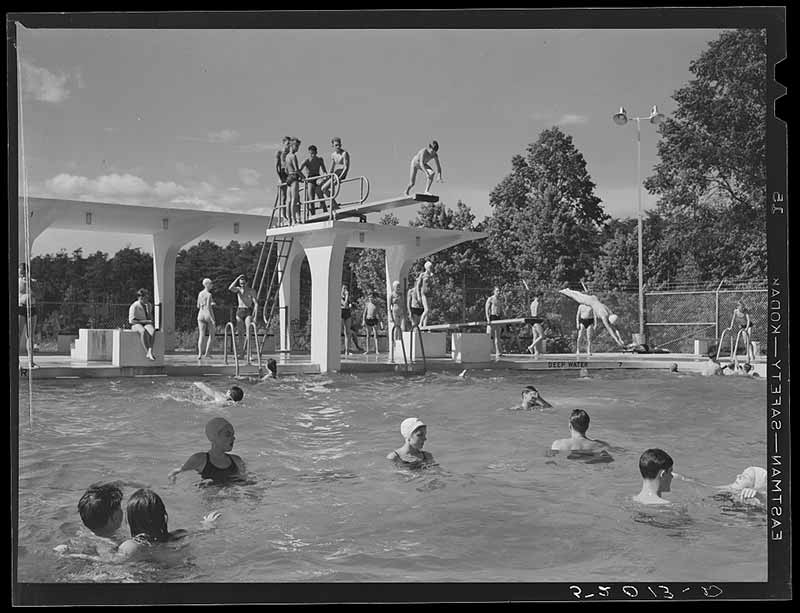
Thomas Jenkins, the behavioral interventionist coordinator at Dickinson, grew up in the relatively progressive enclave of Cambridge, Massachusetts, where he had access to two public pools. Jenkins is the Pass it On coordinator at Dickinson for the swimming program.
“We had city pools that were very cheap. Plus, they had free swimming lessons,” said Jenkins, who is Black. “So everybody in my neighborhood, which was Black, Puerto Rican, Italian, Jewish and Irish, everybody swam. We didn’t even think about not swimming.”
But not everyone was so fortunate.
Jenkins recalled how his dad, from rural east Texas, swam in the river growing up, and the fatal consequences of that involuntary arrangement for one of his relatives.
“They had a pool that Black kids couldn’t go to, which is why they swam in the river. And one of my cousins drowned in the river. He got bit by a snake and then he drowned,” he said.
“If you look at the islands, Jamaica and the Bahamas, everybody swims. So it’s not a cultural thing. It’s something that’s unique to America.” —Thomas Jenkins, behavioral interventionist coordinator at Dickinson Middle School
When President Lyndon Johnson signed the Civil Rights Act, ending segregation, Jenkins said, “they actually shut the pool down and just gave the Black kids one day or so.”
Over time, this lack of equal access exacerbated existing disparities between Black and white people with respect to swimming. It also led to the notion — unsupported but persistent — that culture, and not race or racism, was to blame for the problem. As the thinking went, Blacks did not swim as much, or as well, as whites because it was not part of their culture.
But this is nonsense, Jenkins says.
“If you look at the islands, Jamaica and the Bahamas, everybody swims,” Jenkins said. “So it’s not a cultural thing. It’s something that’s unique to America.”
‘I hope to see more color’
Back at the pool, the kids sat in a circle with the swimmers and divers and talked about teamwork before making their way to the water. There, the more advanced swimmers practiced their strokes, while the less advanced ones learned to float on their backs and to kick with the assistance of a kickboard. A group of about 10 swimmers and divers who were not in the water shouted instructions and encouragement at the kids from the deck.
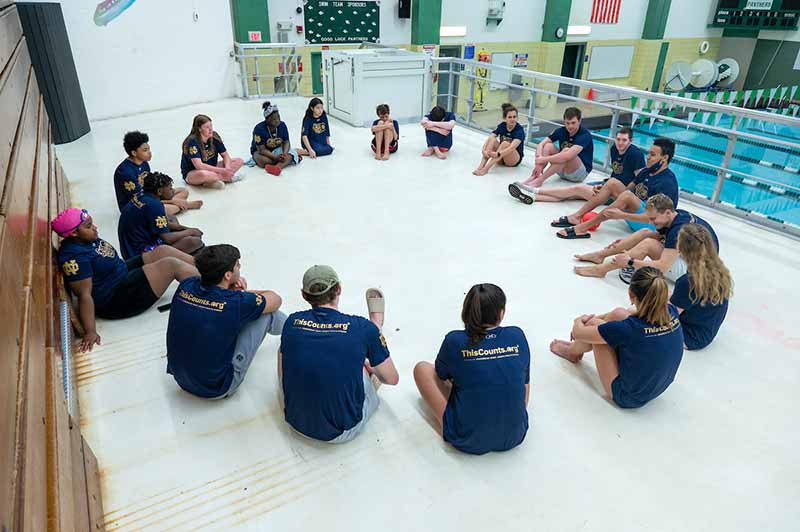
Davon Scaife, 12, was among the swimmers from Dickinson.
“It was real fun,” the sixth-grader said, his red-tipped dreadlocks dripping water onto the white-and-green tiled pool deck. “I got to learn new tricks.”
In addition swimming in the middle of winter in northern Indiana, Scaife said he enjoyed the opportunity to interact with the student-athletes.
“Notre Dame is my favorite place,” he said. “That’s where I want to go when I grow up, to college.”
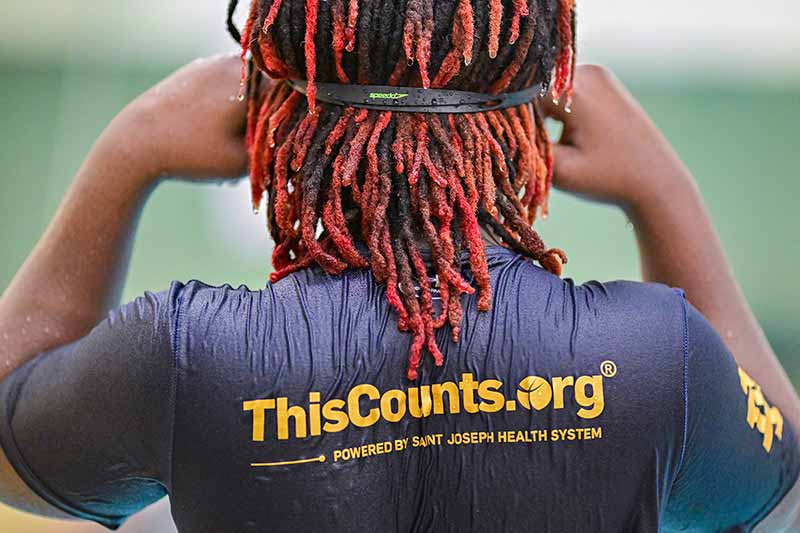
Like Navarre, Dickinson is a Title 1 School, meaning a high number or percentage of students come from low-income households. From a demographic perspective, the school is about 50 percent Black and 30 percent Hispanic. More than 80 percent of the student body is economically disadvantaged, according to state data.
“A lot of our kids don’t swim, so they’re afraid of it,” Jenkins, the behavioral interventionist coordinator, said, pointing to a lack of access to public and private pools as the primary culprit.
By creating opportunities for kids to learn about swimming in a safe, fun environment, Wilburn, for his part, hopes to change that.
“This is something I am really passionate about. I want to see in 10, 20 years a lot more color in competitive swimming,” he said. “And even if these kids don’t become competitive swimmers, I hope that when I go to the local pool in 10 to 20 years, I see more than the typical white person swimming back and forth. I hope to see more color.”
